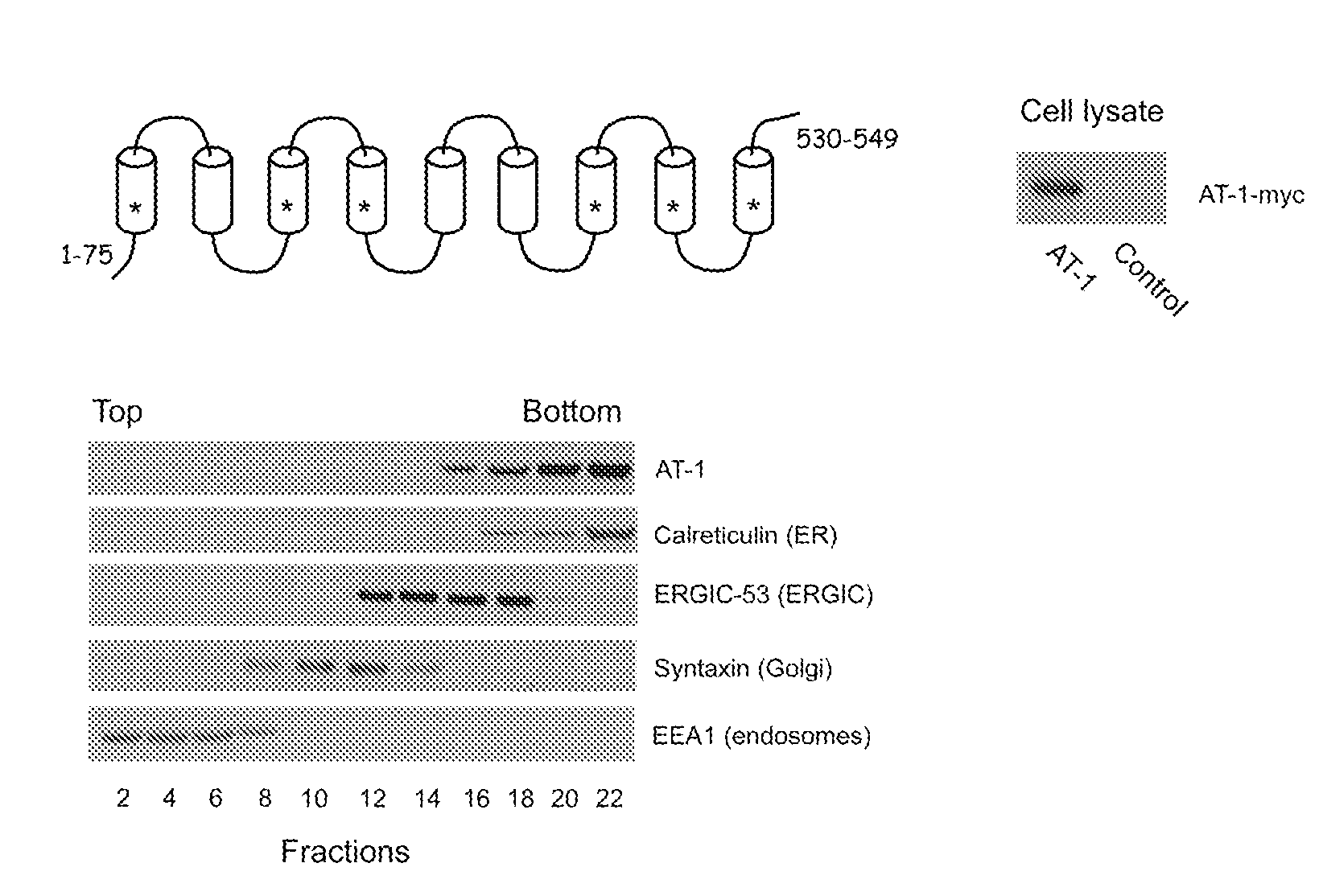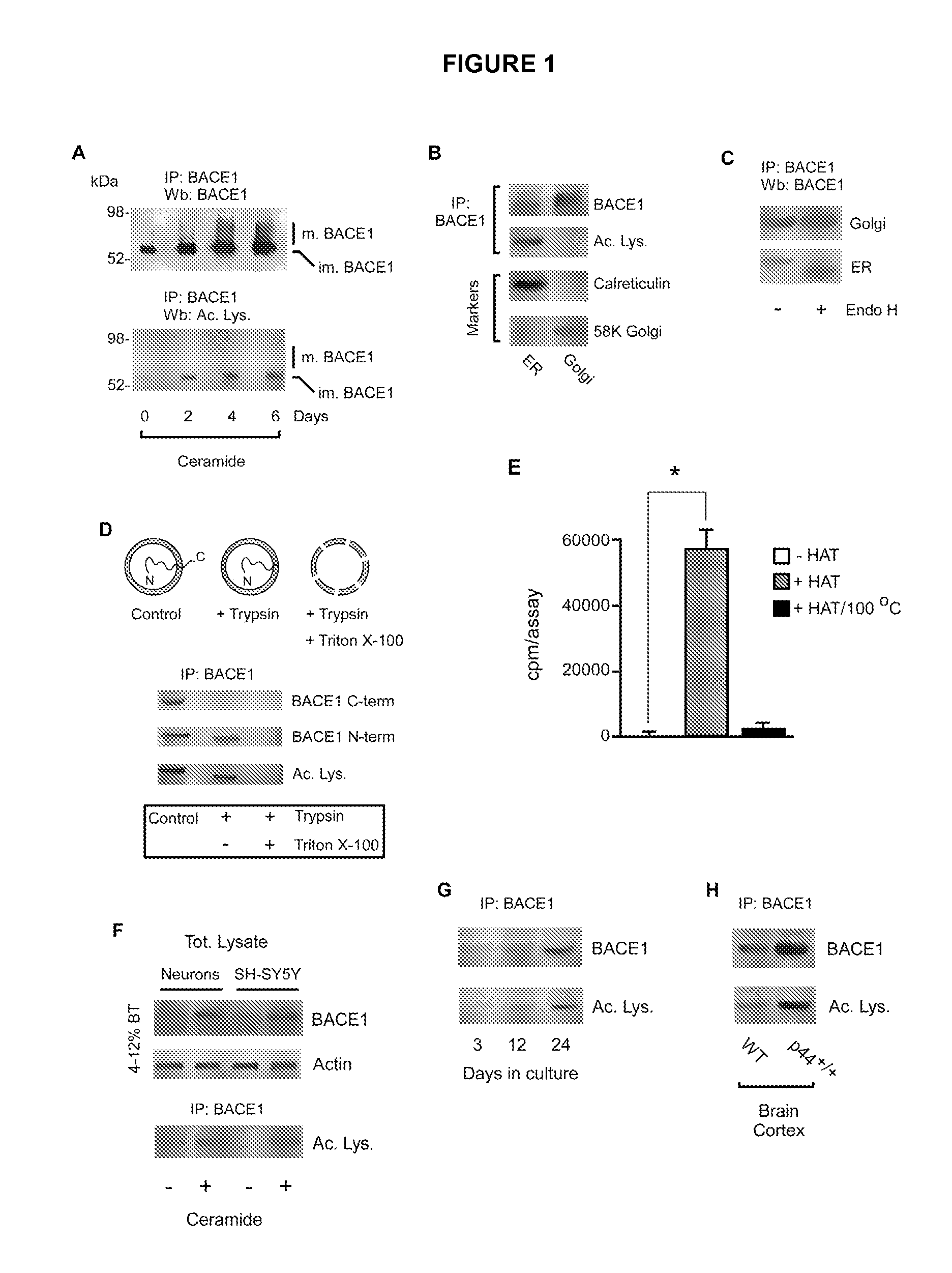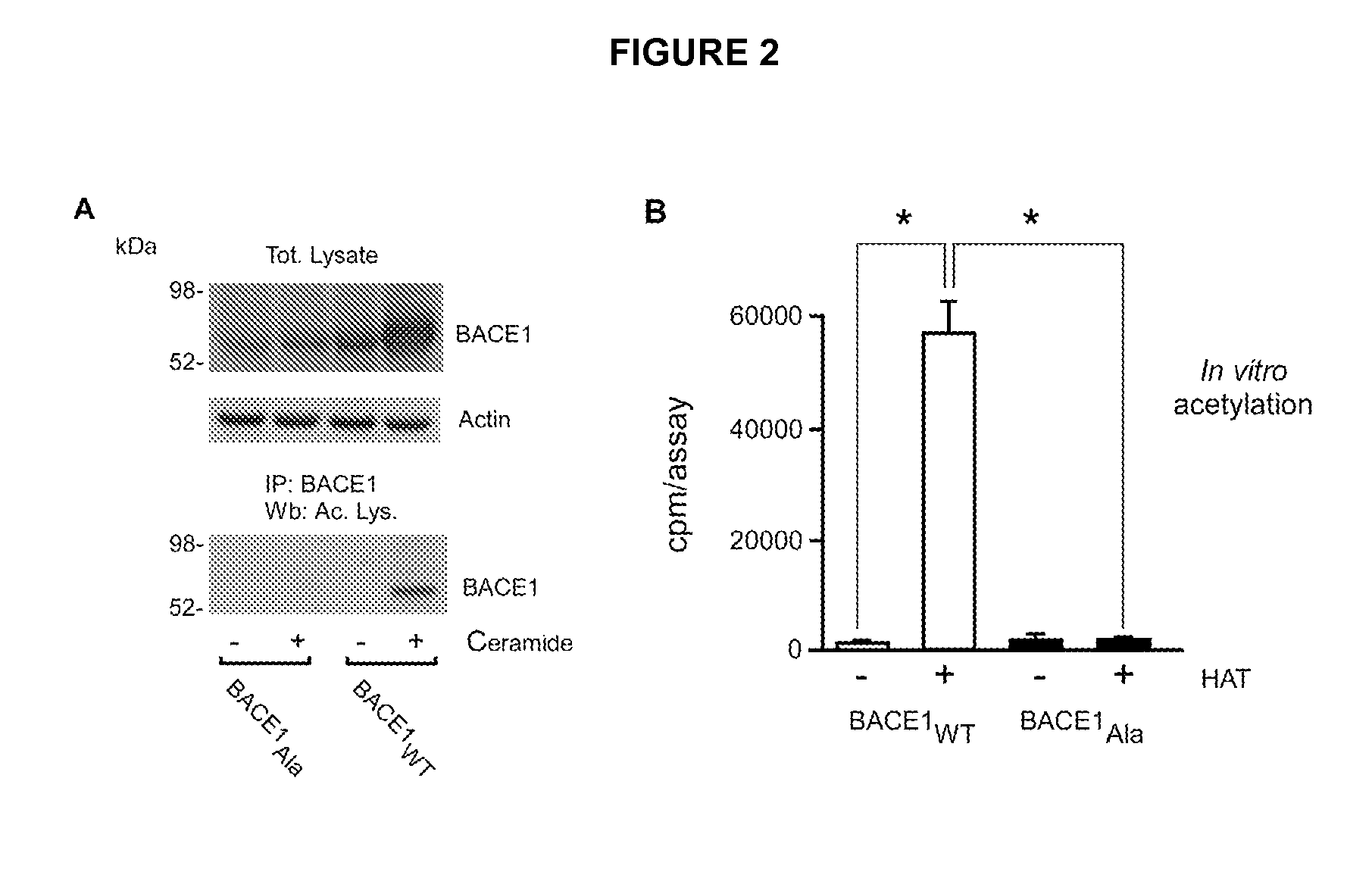Identification of novel post-translational protein modifications
a post-translational protein and protein technology, applied in the field of post-translational protein modifications and neurological diseases, can solve the problems of protein quality control failure and directed toward erading for final degradation, and achieve the effect of reducing or eliminating acetyl-coa transport activity and reducing the acetyl-coa transport activity
- Summary
- Abstract
- Description
- Claims
- Application Information
AI Technical Summary
Benefits of technology
Problems solved by technology
Method used
Image
Examples
examples
[0071]It is to be understood that this invention is not limited to the particular methodology, protocols, subjects, or reagents described, and as such may vary. It is also to be understood that the terminology used herein is for the purpose of describing particular embodiments only, and is not intended to limit the scope of the present invention, which is limited only by the claims. The following examples are offered to illustrate, but not to limit the claimed invention.
[0072]Cell Cultures and Cell Treatment
[0073]Chinese Hamster Ovary (CHO) cells were grown in DMEM (Gibco BRL—Invitrogen, Carlsbad, Calif.) supplemented with 10% fetal bovine serum (FBS) and penicillin / streptomycin (Mediatech, Inc., Herndon, Va.) as described before (Puglielli et al., 2001, Nat. Cell Biol. 3: 905-912; Puglielli et al., 2003, J. Biol. Chem. 278: 19777-19783; Costantini et al., 2005, Biochem. J. 391: 59-67; Costantini et al., 2006, EMBO J. 25: 1997-2006). Cells were maintained in a humidified atmosphere ...
PUM
| Property | Measurement | Unit |
|---|---|---|
| dissociation constants | aaaaa | aaaaa |
| dissociation constants | aaaaa | aaaaa |
| dissociation constants | aaaaa | aaaaa |
Abstract
Description
Claims
Application Information
 Login to View More
Login to View More - R&D
- Intellectual Property
- Life Sciences
- Materials
- Tech Scout
- Unparalleled Data Quality
- Higher Quality Content
- 60% Fewer Hallucinations
Browse by: Latest US Patents, China's latest patents, Technical Efficacy Thesaurus, Application Domain, Technology Topic, Popular Technical Reports.
© 2025 PatSnap. All rights reserved.Legal|Privacy policy|Modern Slavery Act Transparency Statement|Sitemap|About US| Contact US: help@patsnap.com



